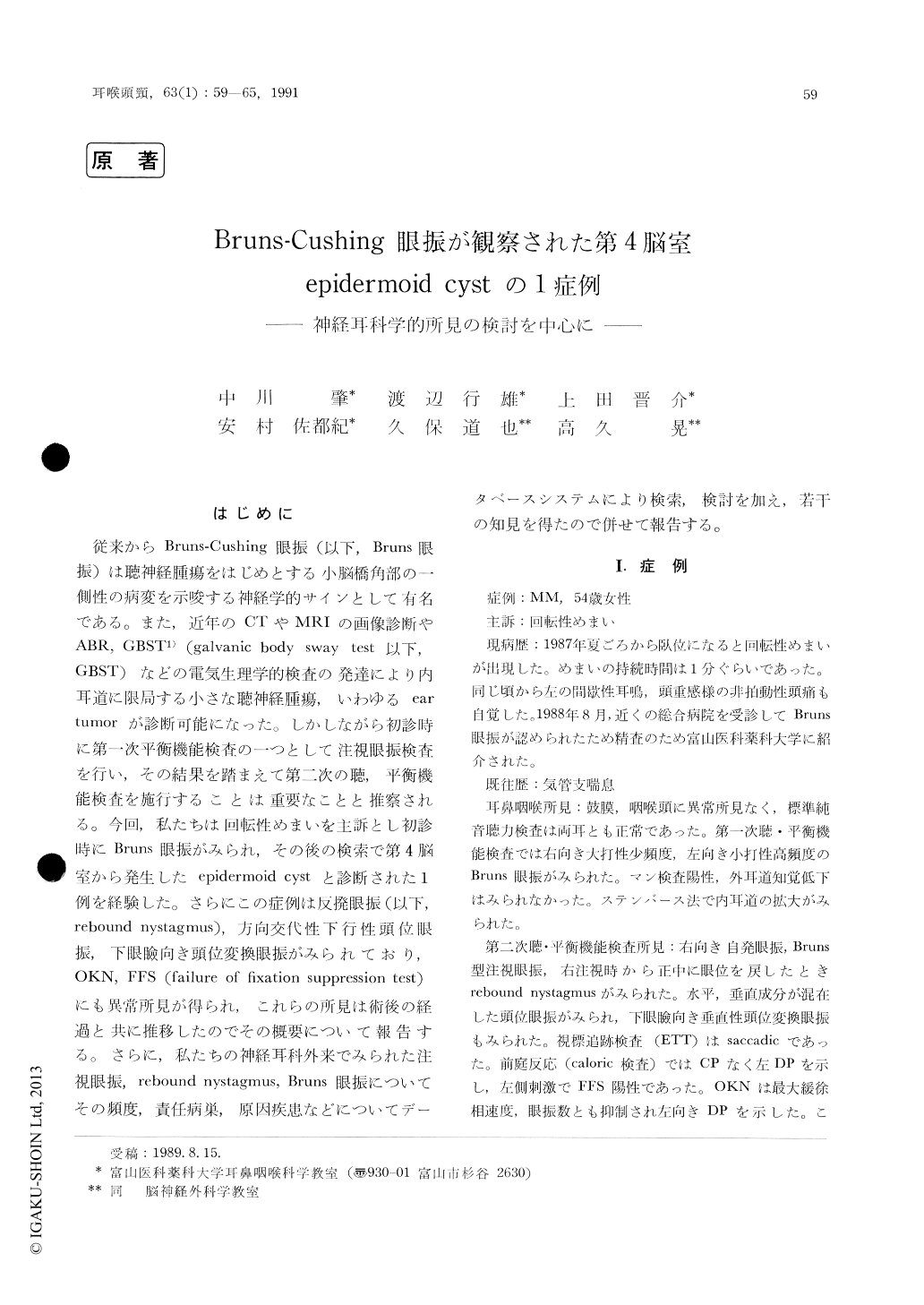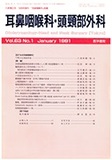Japanese
English
- 有料閲覧
- Abstract 文献概要
- 1ページ目 Look Inside
はじめに
従来からBruns-Cushing眼振(以下,Bruns眼振)は聴神経腫瘍をはじめとする小脳橋角部の一側性の病変を示唆する神経学的サインとして有名である。また,近年のCTやMRIの画像診断やABR,GBST1)(galvanic body sway test以下,GBST)などの電気生理学的検査の発達により内耳道に限局する小さな聴神経腫瘍,いわゆるeartumorが診断可能になった。しかしながら初診時に第一次平衡機能検査の一つとして注視眼振検査を行い,その結果を踏まえて第二次の聴,平衡機能検査を施行することは重要なことと推察される。今回,私たちは回転性めまいを主訴とし初診時にBruns眼振がみられ,その後の検索で第4脳室から発生したepidcrmoid cystと診断された1例を経験した。さらにこの症例は反撥眼振(以下,rebound nystagmus),方向交代性下行性頭位眼振,下眼瞼向き頭位変換眼振がみられており,OKN,FFS (failure of fixation suppression test)にも異常所見が得られ,これらの所見は術後の経過と共に推移したのでその概要について報告する。さらに,私たちの神経耳科外来でみられた注視眼振,rebound nystagmus,Bruns眼振についてその頻度,責任病巣,原因疾患などについてデータベースシステムにより検索,検討を加え,若干の知見を得たので併せて報告する。
A 54-year-old female patient with a complaint of positional vertigo along with headache, who showed several neurotological findings including Bruns type gaze nystagmus, alternating positional nystagmus, suppressed OKN with DP to the left, failure of fixation suppression (FFS), and discre-pancy between the direction of spontaneous nystagmus and OKN-DP. These findings suggested a right CP angle and cerebellar lesion.
MRI detected the lesion more clearly than in x-ray CT. From our data-base system of neuro-tological clinic, the significance of delectability of these findings was discussed. The conclusions were summerized as follows; Although the number of the cases with acoustic neurinoma showing Bruns type nystagmus has been decreased so far in advance both with neurophysiological test (ABR, GBST) and with image analysis, with ABR and galvanic body sway test (GBST), it is still of a great importance to detect the other cere- bellopontine angle lesions.

Copyright © 1991, Igaku-Shoin Ltd. All rights reserved.


